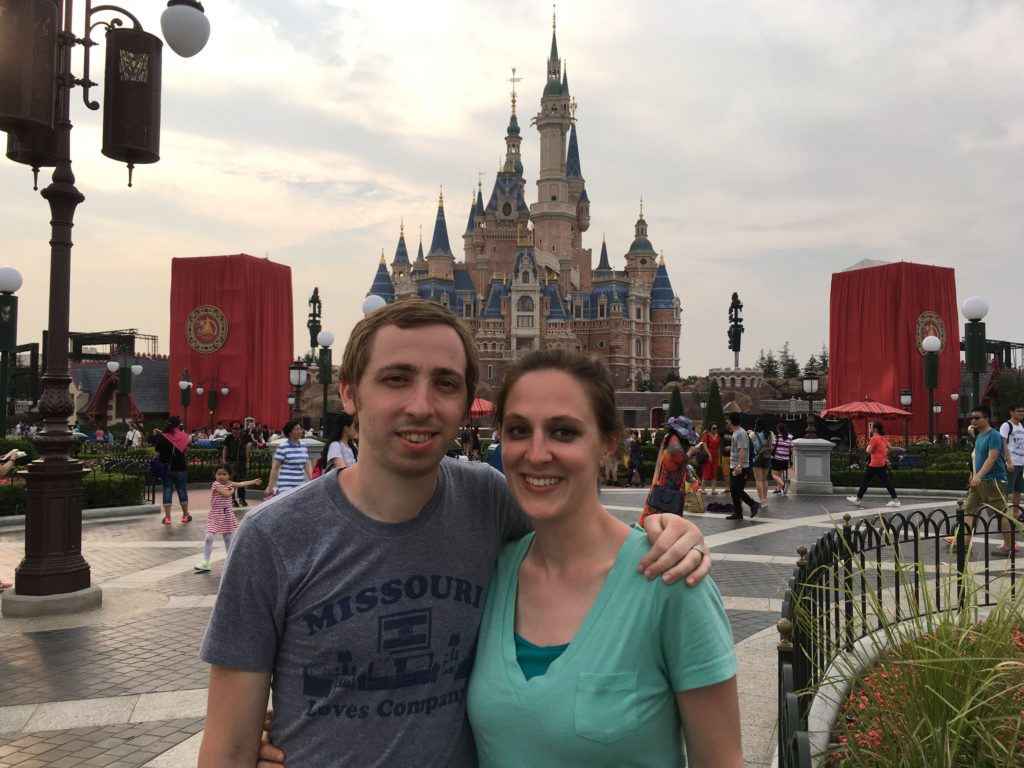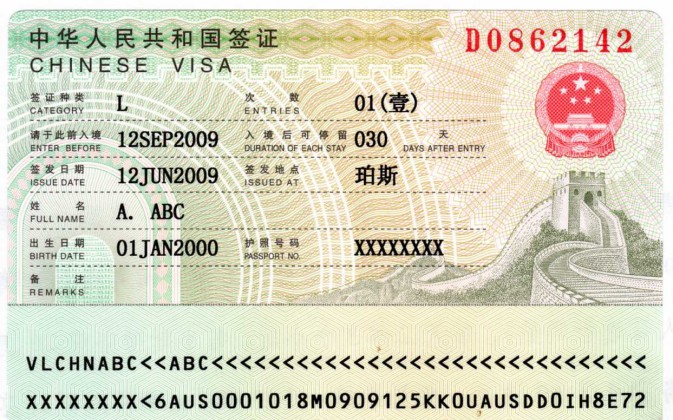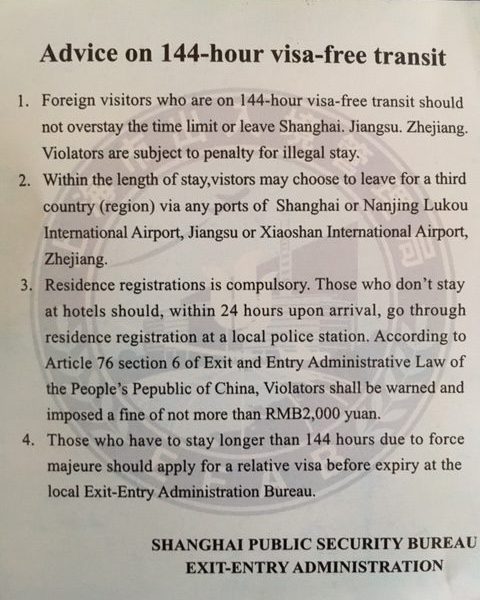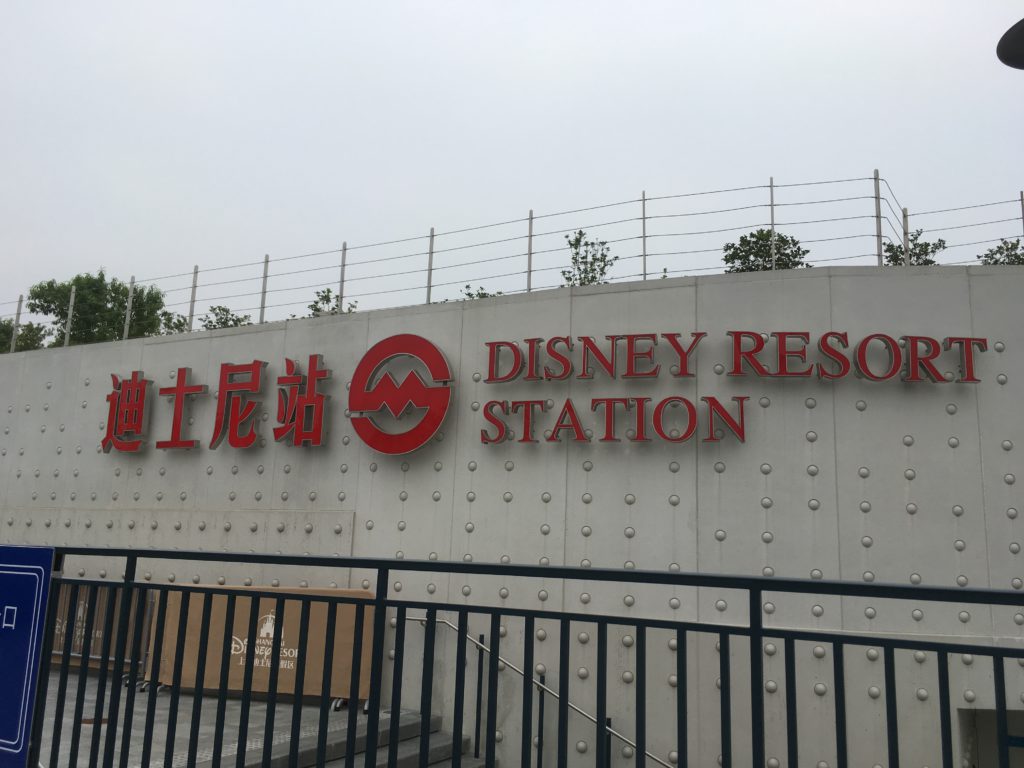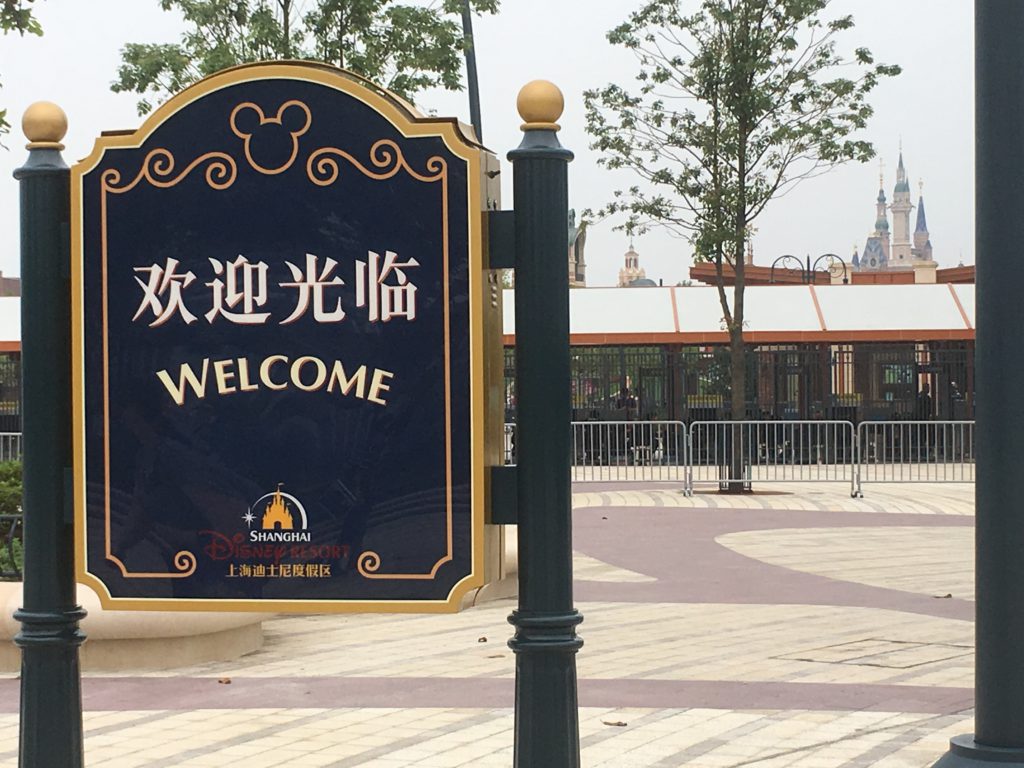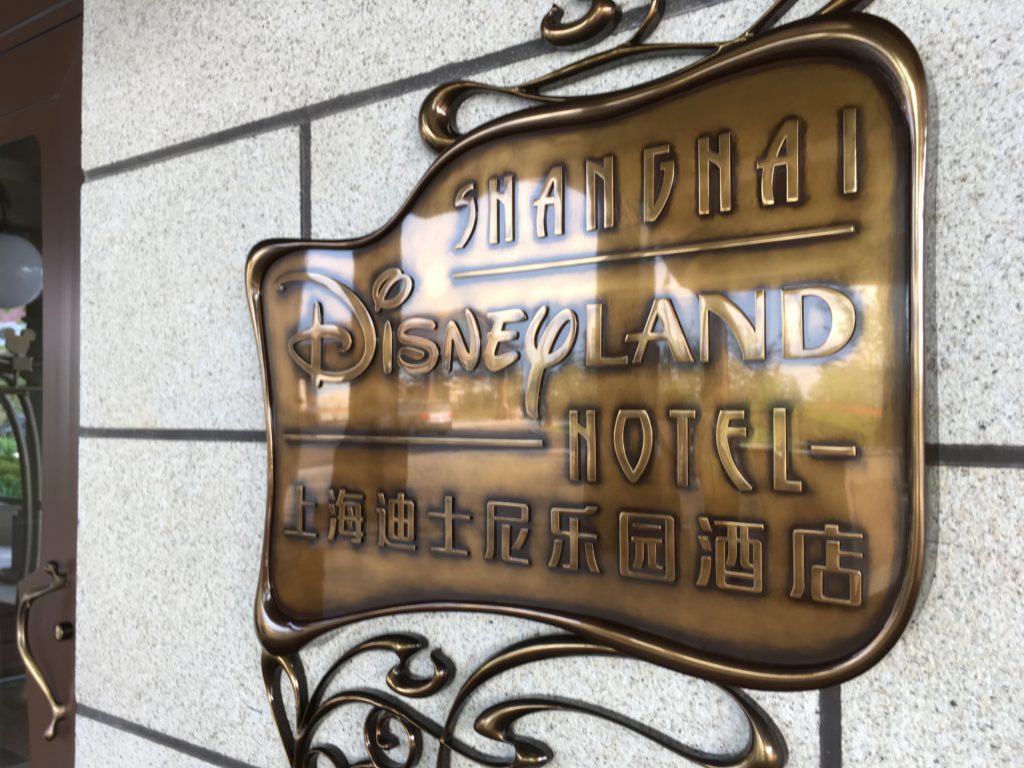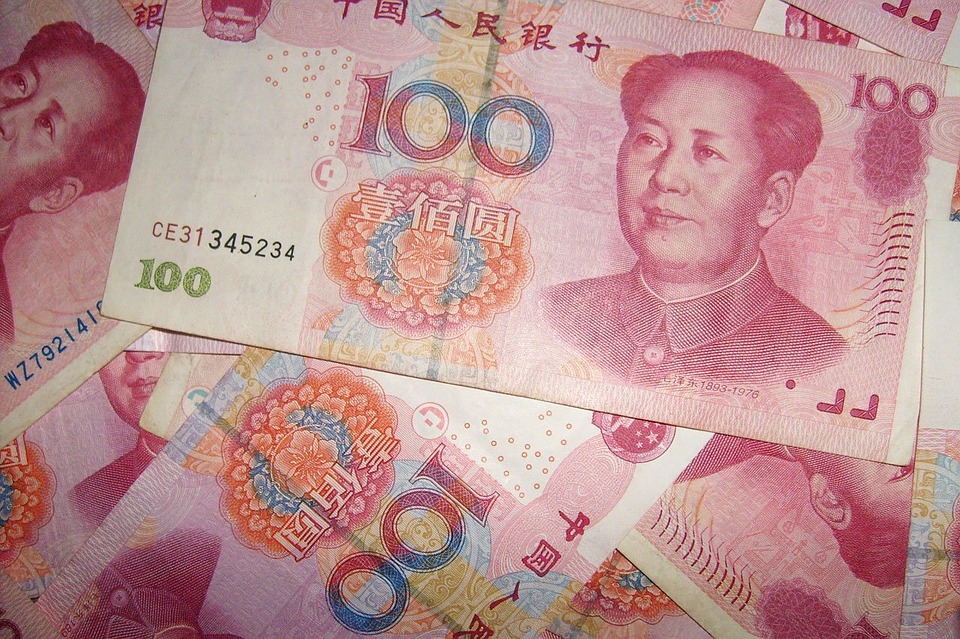You’ve seen the pictures, watched the videos, and seen the reports. So how can you see Shanghai Disneyland for yourself? Honestly, it may not be as complicated as you might think — although there are some things you should definitely be aware of.
Having just returned from the other side of the world, I am now prepared to offer my Shanghai Disneyland travel guide based on my experiences visiting the parks, the city, and more:
1) For a stress-free time, get a visa. But…
In a previous article I wrote about planning my Shanghai trip, I mentioned that American passport holders are required to obtain a visa before visiting China. While this is mostly true — and is 100% true if you are traveling from America to Shanghai and directly back to America — there are exceptions that I deemed too complicated to speak on with authority at the time. However, now that I’ve experienced them first hand, I feel I’m ready to properly explain the rules and what you might encounter if you try to use one of these programs.
Shanghai’s 144-hour visa exception
Thanks to a rule enacted just earlier this year, Americans and residents of other select countries may enjoy up to 144 hours in the districts of Shanghai, Jiangsu, and Zhejiang if you meet the following criteria:
- You are arriving from a country outside of the People’s Republic of China (PRC).
- You hold a confirmed ticket onward to a third country (not the country you came from) less than 144 hours from the time of your arrival.
- You do not leave the designated districts or connect to other cities within PRC.
For the purposes of this rule, Hong Kong counts as a separate country. That means that if (like me) you were to visit Hong Kong Disneyland before or after your trip to PRC and Shanghai Disneyland, you may qualify for this exemption.
Say for example you are flying out of LAX and returning to LAX but visiting both Hong Kong (HKG) and Shanghai (PVG) along the way. In this case, your itinerary that goes LAX > HKG > PVG > LAX would be compliant as long as you didn’t spend more than 144 hours in Shanghai. Additionally, the amount of time you spend in any country other than PRC is irrelevant. So, say your flight from LAX goes to Tokyo (NRT) where you have a one-hour layover before taking another flight from NRT to PVG — in this case, you can still qualify for the 144-hour exception as you would be coming to PRC from Japan before departing for the United States. Voila!
Traveling without a visa and being prepared
Admittedly, this can get quite complicated. Worse yet, it seems that many airline employees are not familiar with all of these rules and may give you trouble when you try to board your flight. To combat this, I recommend reviewing this thread on the FlyerTalk message board that gives you all of this info you’ll need. In my case, I needed the gate agent to contact a supervisor who could walk her through how to enter our exception in the computer and allow us to board. (Note: most airlines will need to approve your passport and visa at the start of your itinerary which for us was Atlanta. For smaller airports, it may be an even bigger issue as they are probably less accustomed to having international travelers.)
Be advised that at every step of the way it took extra time for us to explain that we were taking advantage of the 144-hour exception. Even when people are aware of the rules, it does take a while to enter all of your information, confirm your ongoing flights, etc. You can assist with the process by having all of your information printed and ready to show them including all of your flight confirmations (make sure it shows a ticket number in addition to your confirmation number), hotel bookings for Shanghai, and maybe even the TIMATIC print out from the aforementioned FlyerTalk thread. You’ll also want to hold on to your boarding passes even after your flight is completed so that you can show immigration officers where you’re arriving from. All of this documentation came in handy when we were making our way across the globe.
The good news is that, once you get to PVG, things are a little easier. However, while there is a special line for those seeking the 144-hour visa exception, the desk is not always occupied. If no one is there, just ask the person manning the regular “Foreigners” line about it and they will either have you join the normal line or take your information and have you wait for the designated 144-hour line person to return (the latter happened to us).
Of course, if this all sounds too complicated or stressful for your taste, you can always just purchase a visa by visiting one of the Chinese embassy or consulate locations to apply. If you cannot visit one in person, you can either have a friend turn in your application for you or you can hire a service to do so. Just be sure to follow directions for that as well, including sending your application to the consulate assigned to the state you live in.
2) The Metro is your friend, but…
For the first couple of nights before Shanghai Disneyland opened, we stayed off property at a hotel relatively close to Pudong International Airport. While I had learned that Uber operates in Shanghai as do traditional cabs, my wife and I decided to take the Metro in order to get around town. Using the Explore Shanghai app, I was able to figure out what route I would take to get down to Shanghai Disneyland including where to transfer. Best of all? It was only 12¥ each way for two passengers, which equates to about a $1 per person.
If you’re not used to taking public transit, be aware that you will likely have to make a number of transfers in order to get to your destination (although this is included in your price as you select your final destination when purchasing). As a result, it took us about an hour to get to the Disney Resort — which, by the way, has it’s own train stop at the end of Line 11. Also, if you relish personal space, riding the Metro may not be for you as trains can get quite cramped at times. You will also have to be somewhat comfortable with a little pushing or you’ll never get anywhere.
Another thing to watch out for if you’re relying on the Metro is the time of the last train. Although Disneyland remained opened until 10 p.m. during our visit, the last train left the station not too long after that. Additionally, if you have any transfers, taking the last train out of the Disney Resort could mean you get stranded at your transit point. So while I enjoyed my experience on the Shanghai Metro overall, just be mindful of these quirks. Lastly, while I didn’t take a cab during my time in Shanghai, my friends reported that they were reasonably cheap as well.
3) English seems pretty common at Disney, but…
I don’t think there was a single time where my English-speaking ways caused confusion while at Shanghai Disneyland. In fact, even more so than at Tokyo Disneyland, it seemed that every Cast Member I interacted with spoke English and spoke it well. However, this isn’t to say that the same is true of the rest of Shanghai or that you shouldn’t know a few words of Mandarin just in case.
One term I found myself saying more than any other was “xie xie” (pronounced “shay shay”) which means “thank you” in Mandarin. Even if the person I was talking to spoke perfect English, I would still end the conversation with this — I guess just to show that I was trying. Other than that, I might greet people with a “ni hao” but, most of the time, the person beat me to a “hello” instead.
As for the city, outside of the hotel or airport, English seemed far less popular. In these cases, I was still able to buy things or even order food by pointing and speaking slowly. Thankfully, the Metro trains offered English announcements, reader boards, and an English option on the ticketing kiosks so that was no problem.
The moral of the story is, if you can learn a little Mandarin before your trip, great. If not, you’ll probably be OK, especially if you intend to spend the majority of your trip in the Resort.
4) I didn’t see any “bad behavior,” but…
Before Shanghai Disneyland even opened, photos of people visiting the Disney Resort Metro stop, Disneytown, and Wishing Star Park went viral as they showed an abundance of litter, graffiti, and even some… well… bathroom issues. Some similar photos have surfaced from the Grand Opening weekend, but I have to say that I didn’t witness any of this during my trip.
Sure there was some light litter to be found in a couple of the queues such as poncho wrappers or empty water bottles, but that was really it. Maybe I missed it, but I certainly didn’t see any lawn defecation. And, while we’re on the subject of restrooms, as Gloria pointed out in her article, the majority of the stalls are “squatters” but you will find western toilets if you keep walking — that’s probably a better idea than going on the grass.
5) Keep hydrated, but…
When we were in Shanghai, the temperature was only in the 80s (Fahrenheit) but boy will that humidity get ya. If you’ve been to Florida, it’s not terribly different but it sure is hot. Because of this you’ll want to be sure to drink plenty of water. However, it is not advised that Americans drink tap water in China.
At the Disney hotels as well as many others in Shanghai, guests are given complimentary bottles of water. Sometimes these are kept in the mini-bar (some are also for sale, so be sure to ask if you can’t figure out which is which) while other times they are kept in the bathroom. Why in the bathroom? It may be a reminder that you might also want to use that bottled water to brush your teeth. Our Disney room contained four bottles of water while our other hotel had two but, if you need more, drug stores and convenience stores sell water for about 2¥ or about 30¢ per bottle.
Inside of Disneyland park, there are specially marked stations that dispense sanitized drinking water (although I personally just stuck to purchasing bottles despite the fact that they were marked up to the typical Disney Park price of 10¥). Additionally, sodas poured from soda fountains use filtered water. As for ice, I’m not quite sure if it’s safe or not. I’d be inclined to trust it at Disney, but, when the cashier specifically asked if I wanted ice or not, I took it as a hint and decided to go ice-free for the rest of the trip. So I suppose that choice is really up to you.
Other Quick Tips
- While you may want to bring some cash (Chinese yuan, also called renminbi) for the Metro and purchases at smaller retailers in the city of Shanghai, American credit cards are accepted throughout most of Disney and at many fast food establishments. Heck, some places even had Apple Pay!
- A quick way to convert CNY to USD is to divide by six. This isn’t an exact science and it is subject to change, but it will get you in the ballpark.
- Tipping is not necessary for many things in China such as dining. That being said, at westernized hotels (like Disney) and other places, you may want to tip for services like having your luggage delivered to your room. For more information on tipping, see this page on Travel China Guide so you don’t feel awkward.
- Don’t forget to download a VPN on your phone and laptop if you want to be able to visit Twitter, Facebook, Instagram, Google, or other blocked sites while in PRC.
- When standing in a queue as a group, you may want to stand at least two by two. Many times we found that, if we didn’t, people would try to push past us.
- Coke drinkers beware: Shanghai Disneyland serves Pepsi — gasp!
- You may have heard about the smog in Shanghai, but, in my experience, it was visible but not noticeable as far as breathing. However, if you do have asthma or other issues that could be complicated by the pollution, you may want to consider wearing a face mask. If you do, you certainly won’t be alone.
Have more questions or suggestions for things we should add to our Shanghai Disneyland travel guide? Tweet us @laughing_place on Twitter or e-mail [email protected] and we’d be happy to help!

